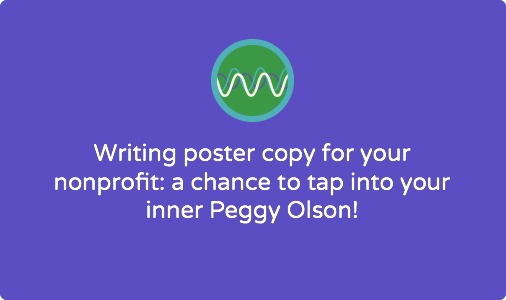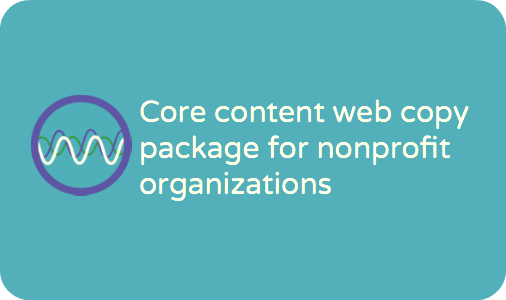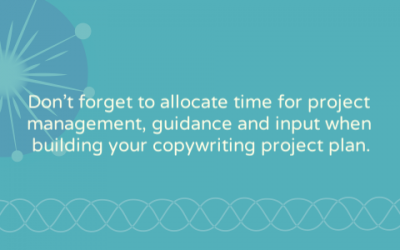Though many of our communications have gone digital, sometimes you just know that a well-placed print item can be an effective way to spread the word about your nonprofit’s program, service or event. So, if a poster (or flyer) really is a smart promotional vehicle to use, here’s a little help with writing one.
Think of posters and flyers, not just as pieces of paper onto which you can slap event details, but as print advertisements. Then, plan and write your copy accordingly by following these steps.
How to write a promotional poster in six steps
1. Understand your audience
I constantly repeat this because it’s important; you must carefully consider your audience every time you write nonprofit content. Help improve the effectiveness of your poster copy by deciding precisely who you’d like to reach and creating an audience persona.
2. Create a features and benefits chart
When you write, it’s going to be with a focus for what’s in it for your audience. Kick start this thinking by creating a features and benefits chart. In the features column, list words and phrases that describe the program, service or event you’re offering. The benefits column is key: use it to list words and phrases that describe what positive result your offering will mean for them.
3. Write 30 headlines and choose one
When it comes to a poster or flyer, your headline has to do the big job of getting attention, so plan on spending the bulk of your time on headline brainstorming. Write far more headlines than you’ll need in order to allow many, creative ideas to emerge; my recommendation is to brainstorm at least 30 headline options to start. Yes, 30!
When developing advertising copy, there are a number of print ad veterans you can turn to for inspiration. For example, I always refer to books on my shelf by Bob Bly and Luke Sullivan. Amazingly, I found a headline swipe file by Bob Bly online that is packed with ideas to get you started. Keep an open mind and just start writing. You’ll have time to rule things out when you shortlist; after all, you’re only going to pick one winner!
Once you have your full list of brainstormed headlines, you can start to shortlist:
- Weed out any headlines that don’t instantly communicate a benefit to the reader.
- Group your list into categories or styles and then weed out duplicates.
- Revisit your audience personas and remove headlines that won’t appeal to or resonate with them.
- Remove options that you know aren’t going to make it through internal approvals.
Speaking of internal approvals, how you move from shortlist to final selection will depend on your internal process. Will you need to show multiple options to someone for approval? If yes, narrow your list down to three to five options. Making the decision on your own? Narrow it down to five, pick your favourite and then see if you’ve changed your mind once you’ve written your body copy (see step #5 below).
Whatever you do, don’t just throw your program or event name up as a headline. Once again, use your headline to get attention first and then explain your offering.
4. Think about your visuals
We’re talking about writing here, but you’ll need to keep your options for visuals in mind while you write.
Your resources will determine the visuals you’ll be including in your poster. For example, you’ll have to keep visuals very simple, with clean lines (e.g. illustrations) if you’re going to be reproducing via black-and-white photocopies. If this is the case, you might want to consider letting the copy stand on its own and you’ll definitely want to steer clear of cheesy clip art. If you have the luxury of colour printing, you’ll have more room to consider photography (and there are many great stock photography options available). Whatever your approach, select a headline and visual combination that work well together.
5. Write the poster body copy
Now that you’ve got people reading with your attention-grabbing headline, you can use your body copy to explain more.
- Include just enough information about features to describe your program, service or event and provide logistical details.
- Continue to include benefits to communicate what’s in it for readers.
- Include plenty of ‘you’ and ‘your’ in your copy.
- Don’t use jargon or acronyms: a lack of clarity increases your chances of losing readers.
- Keep this copy very concise (word count will depend on the size and design of your poster) and break it up into bullets if possible.
- Make sure this copy flows from or relates to your selected headline.
6. Write a call to action
Close out your poster copy by asking readers to take action. Decide on the one key thing you’d like them to do and ask them to do it! For example, call to book an appointment or buy tickets, register online, or mark a date on a calendar.
Have fun with it!
Most of all, have fun with writing poster copy; tap into your inner Don Draper or Peggy Olson and set time aside to make it an enjoyable creative exercise.
What do you think of this process? What poster writing tips would you share?


![Internal copy review pet peeves – and help with getting useful feedback [includes swipe copy]](https://moflow.ca/wp-content/uploads/2021/02/sharable-boxes-3-400x250.png)

